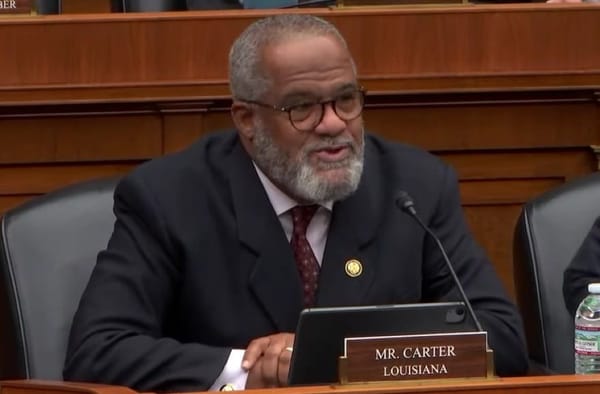Kevin Ross: The Time is Now to Expand Internet Access with Fixed Wireless Broadband at Gigabit Speeds
New approaches must leapfrog the slow pace of extending fiber to the home and high costs of 5G and satellite.
Broadband Breakfast

The COVID-19 pandemic has altered our behaviors in bandwidth consumption and driven enormous demand for reliable, high-speed internet access. Even before the pandemic spiked, high school and college students nationwide experienced this need for speed and continue to face this challenge today.
Broadband access also remains a critical need for millions of employees seeking to increase their productivity while working from home. According to ABI Research, “many business are allowing remote working for some of their employees after the pandemic, which will boost the need for home broadband services even further.” Fast, reliable broadband access is critical for file sharing, Zoom meetings, streaming content and other bandwidth-intensive applications. This business imperative will continue in the post-COVID-19 era as the home is now the new office.
High-speed uplink connectivity is another growing concern for at-home workers, not only for web-based conferencing applications but also for sharing large files and rapid uploads. This need puts increasing pressure on upload links.
The solution?
Symmetrical broadband connections, enabling equally fast uplink and download speeds.
With symmetrical access, there is no “speed discrimination” based on the direction of data traffic. End users receive the same network speed for both uploads and downloads. Businesses and work-at-home employees who rely on cloud applications, fast data transfers and non-stop, high-speed connectivity ultimately will benefit from balanced, symmetrical internet connections.
However, a major issue with most broadband services is the prevalence of asymmetrical internet access speeds, reaching hundreds of megabits per second on the downlink but much slower on the uplink. As a result, upload speeds are significantly slower than download speeds, throttling business operations and employee productivity with unnecessarily slow upload speeds. According to Speedtest, the median download speed for fixed U.S. fixed broadband subscribers in October 2021 was 131.16 Mbps, while median upload speed was 19.18 Mbps.
To help close the digital divide, we need innovative, new approaches to broadband deployment that leapfrog the slow pace of extending fiber to the home or the high cost of current conventional 5G wireless and satellite internet options.
Fixed wireless access networks, enabled by new mmWave based FWA technologies, provide an ultra-high-speed alternative to fixed-line broadband service. Although wireless internet service providers have traditionally focused on rural areas, some are deploying services in metro areas using next-generation FWA networks based on ultra-fast millimeter wave technology. FWA has been around for years but with the rollout of mmWave alternatives, FWA networks are commercially viable and speed-competitive with traditional fiber deployments.
In fact, mmWave networks are so fast they are dubbed wireless fiber, bypassing miles of underground fiber and cable infrastructure with faster, easier deployment while delivering multi-gigabit uplink and downlink speeds. The rapid rise of mmWave networks is a game-changer for WISPs and FWA networks, enabling ultra-high-speed broadband services at symmetrical gigabit speeds to residential subscribers and enterprise customers and providing a competitive alternative to fixed-line DSL, cable and fiber as well as emerging satellite broadband access.
Given the complexities of America’s broadband access needs, we’ll see an optimal mix of fiber, mmWave FWA wireless and satellite deployments based on infrastructure requirements. FWA service, for example, makes sense for denser urban and suburban environments where it can provide high-speed wireless broadband to homes and businesses at up to gigabit speeds, connecting the unconnected and expanding and improving broadband access.
This alternate FWA approach is much quicker and less expensive to deploy than traditional fiber-to-the-home or conventional 5G, and unlike Low earth orbit satellite, it has sufficient capacity to deliver gigabit service with significant penetration in densely populated areas. With the steady expansion of mmWave wireless networks, gigabit-speed FWA service will also make symmetrical connectivity a must-have feature and market imperative.
Now and in the future, mmWave-based FWA networks will help drive digital transformation in homes and offices and give at-home workers greater freedom of choice. This trend is even more important today as the COVID-19 pandemic has permanently changed the balance of work and school from home.
Kevin Ross is founder and CEO of WeLink, a rapidly-growing, next-generation broadband provider. Kevin is pioneering the use of mmWave technologies and small cell micro-pop network architectures, combined with a crowdsourced site acquisition model, that reduces small cell deployment costs and time to market by greater than a magnitude of order. This piece is exclusive to Broadband Breakfast.
Broadband Breakfast accepts commentary from informed observers of the broadband scene. Please send pieces to commentary@breakfast.media. The views reflected in Expert Opinion pieces do not necessarily reflect the views of Broadband Breakfast and Breakfast Media LLC.










Member discussion